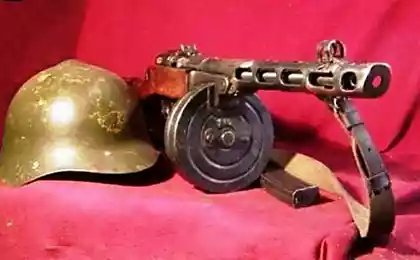958
Animals as a weapon
Animals on the battlefield used since ancient times, as soon as people realized that a horse is less vulnerable than a foot. Later history has known many cases when people did attempt (with varying degrees of success) to use animals as a weapon.
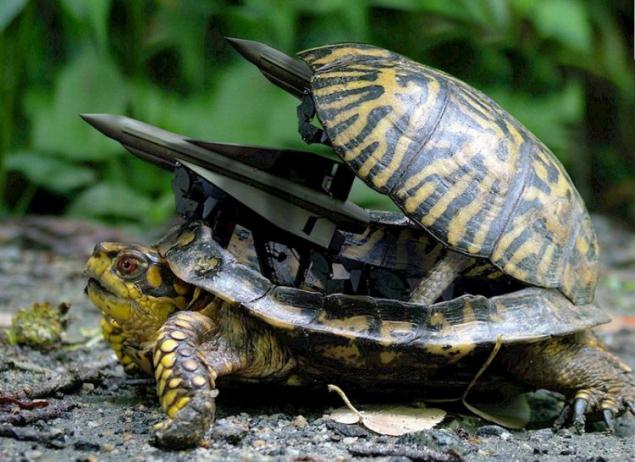
1. Chicken nuclear weapons

In 1957, at the height of the Cold War, the United Kingdom has developed a plan for disposal of a series of nuclear weapons in Germany. Such a plan has been developed in the event of invasion of the Soviet army from the East to Europe. But there was one problem - in the north of Germany, where it was planned to bury warheads, winter temperatures are too low for electronics. Top British military scientists have come up with a ridiculous decision - put in warheads chicken and pour them a week's supply of food. Ostensibly chickens should generate enough heat to electronics to function properly. Fortunately, the mad plan was canceled.
2. Falcons interceptor
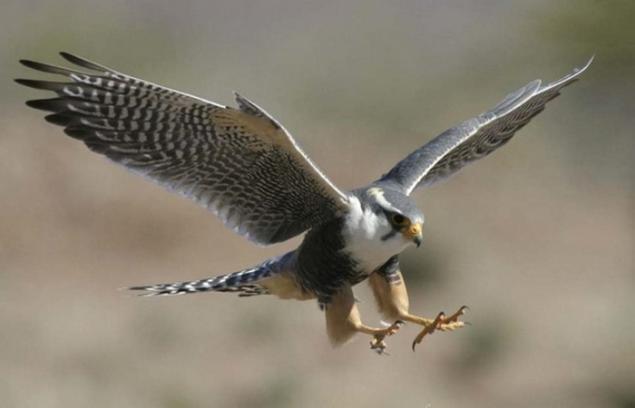
Before long distance relationship became public, to send messages universally used pigeons. During World War II, the United Kingdom has used only about 250,000 pigeons to secretly receive messages from the troops behind enemy lines, especially in situations where a radio could intercept. It was a perfect tactic trained pigeon can fly more than 1,800 kilometers, while not transmitting any signals that could detect enemy. Since the Germans also used the pigeon post, a small detachment of British trained falcons, peregrines so that they patrolled the coast of Great Britain and intercepted flying pigeons. The project has been quite successful.
3. Dolphins saboteurs
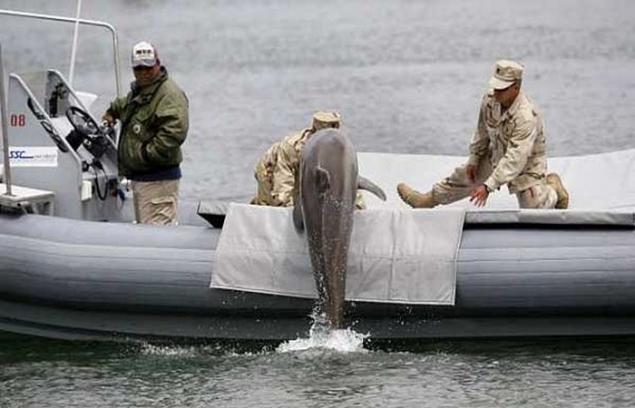
Since 1960, the US Navy there was a division dedicated to one purpose: learning the inhabitants of the sea war. The most common bottlenose dolphins were trained to detect underwater mines, and then prevent them coming marine patrol. Seattle also began to train the dolphins (as in California - sea lions) to detect human intruders. For example, if the dolphin showed a swimmer, he swam to a nearby naval ships to escort patrol to swimmers. The Soviet Union was also alleged military training unit of marine mammals, who trained dolphins to attack enemy ships, recognizing them by the sounds of the screw. Several years ago, the dolphins have been sold to Iran and now live in the Gulf.
4. Bomb - bat
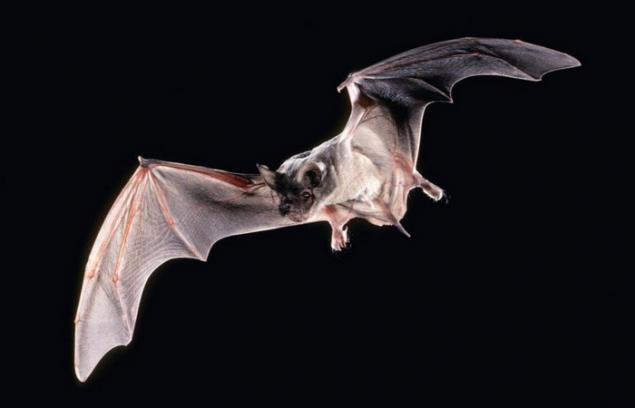
During World War II, military scientists on both sides are actively looking for any ways to gain an advantage. In the United States it drafted a bomb with bats, codenamed Project X-Ray, which is approved by President Roosevelt. Such a bomb dropped from an airplane, and at a certain height it opens, releasing thousands of bats, each carrying a small charge to seventeen grams of napalm. When the bats have landed in trees and buildings in Japan, tiny bombs were ignited and poured all around the fire. The project was one of the main strategies of America, but it was closed to put more money into the creation of the atomic bomb.
5. Genetically modified "vynyuhivateli" bombs

One of the most unpleasant consequences of war are countless mines scattered in the former war zones. These mines represent a real danger to civilians, and it is believed that the seventy countries still have underground mines. That is why Charlotte D'Halst working on breeding of genetically modified mice that could help soldiers to find the mines. Genes altered mice so that they are able to detect smells is 500 times weaker than normal mice. However, their weight is small enough not to accidentally activate the mines.
6. Army men chimps

In the 1920s, Joseph Stalin allegedly approved a plan to create a super-soldier race, which will be mixed the genes of humans and chimpanzees. Work on the project began vet scientist Ilya Ivanov, who was going to create "an invincible human being, insensitive to pain." Ivanov went to French Guinea, where he tried to impregnate female chimpanzees with human sperm, or to be more precise - its. Entries experiments show that he used only three chimpanzee project for insemination, but he brought with him to the Union of ten monkeys. The next stage of the experiment was to be an attempt to impregnate a woman monkey sperm, but before that it never came.
7. Dogs Greek army

Although dogs are widely used in warfare to the present time, they are not entirely arms. In ancient Greece, fighting dogs are among the most fierce opponents on the battlefield. In the seventh century BC in the Greek city of Magnesia started training for the army mastiffs, who reached the weight of 113 kg. Dogs were sent into battle first to break the opponent's structure and stretch. After that, the soldiers joined the battle. Often the dogs even outfitted studded armor.
8. Chemical weapons and bees

In 1994, the US Air Force began to develop non-lethal weapons to use in combat. The project developed chemical bombs, which would have provided an unusual effect on the enemy. For example, in one of these bombs contained pheromones that attract bees and wasps, which were to sting the enemy. Other chemicals would lead to a nasty and prolonged breath opponent.
9. Snake bomb Hannibal

Hannibal was a very talented military leader, and his strategic genius played a crucial role in the Punic wars. Hannibal is best known for the fact that moved his invasion force (including elephants) supposedly impassable through the Alps to attack Rome side, where there were no fortifications. However, on the most bizarre and creative strategy Hannibal few people know. Years after the Punic Wars, the general waged war against Eumenes II, king of Pergamum. During the sea battle in which the troops of Hannibal inferior to the enemy in manpower, has been ordered to throw the ship Eumenes II poisonous snakes. As a result, the battle was won.
10. Pigeon navigation

Another crazy idea since World War II is a Project Pigeon (Dove Project), under which involves placing pigeons inside the rocket nose cone to guide her in the right direction. Project Pigeon was created before the advent of guided missiles, so they are interested in the US military. Doves pre-trained to recognize targets and rocket in front of them placed a screen with the flight path. The pigeons were pecking screen to adjust the trajectory of the missile. The project was canceled because of its impracticality.

1. Chicken nuclear weapons

In 1957, at the height of the Cold War, the United Kingdom has developed a plan for disposal of a series of nuclear weapons in Germany. Such a plan has been developed in the event of invasion of the Soviet army from the East to Europe. But there was one problem - in the north of Germany, where it was planned to bury warheads, winter temperatures are too low for electronics. Top British military scientists have come up with a ridiculous decision - put in warheads chicken and pour them a week's supply of food. Ostensibly chickens should generate enough heat to electronics to function properly. Fortunately, the mad plan was canceled.
2. Falcons interceptor

Before long distance relationship became public, to send messages universally used pigeons. During World War II, the United Kingdom has used only about 250,000 pigeons to secretly receive messages from the troops behind enemy lines, especially in situations where a radio could intercept. It was a perfect tactic trained pigeon can fly more than 1,800 kilometers, while not transmitting any signals that could detect enemy. Since the Germans also used the pigeon post, a small detachment of British trained falcons, peregrines so that they patrolled the coast of Great Britain and intercepted flying pigeons. The project has been quite successful.
3. Dolphins saboteurs

Since 1960, the US Navy there was a division dedicated to one purpose: learning the inhabitants of the sea war. The most common bottlenose dolphins were trained to detect underwater mines, and then prevent them coming marine patrol. Seattle also began to train the dolphins (as in California - sea lions) to detect human intruders. For example, if the dolphin showed a swimmer, he swam to a nearby naval ships to escort patrol to swimmers. The Soviet Union was also alleged military training unit of marine mammals, who trained dolphins to attack enemy ships, recognizing them by the sounds of the screw. Several years ago, the dolphins have been sold to Iran and now live in the Gulf.
4. Bomb - bat

During World War II, military scientists on both sides are actively looking for any ways to gain an advantage. In the United States it drafted a bomb with bats, codenamed Project X-Ray, which is approved by President Roosevelt. Such a bomb dropped from an airplane, and at a certain height it opens, releasing thousands of bats, each carrying a small charge to seventeen grams of napalm. When the bats have landed in trees and buildings in Japan, tiny bombs were ignited and poured all around the fire. The project was one of the main strategies of America, but it was closed to put more money into the creation of the atomic bomb.
5. Genetically modified "vynyuhivateli" bombs

One of the most unpleasant consequences of war are countless mines scattered in the former war zones. These mines represent a real danger to civilians, and it is believed that the seventy countries still have underground mines. That is why Charlotte D'Halst working on breeding of genetically modified mice that could help soldiers to find the mines. Genes altered mice so that they are able to detect smells is 500 times weaker than normal mice. However, their weight is small enough not to accidentally activate the mines.
6. Army men chimps

In the 1920s, Joseph Stalin allegedly approved a plan to create a super-soldier race, which will be mixed the genes of humans and chimpanzees. Work on the project began vet scientist Ilya Ivanov, who was going to create "an invincible human being, insensitive to pain." Ivanov went to French Guinea, where he tried to impregnate female chimpanzees with human sperm, or to be more precise - its. Entries experiments show that he used only three chimpanzee project for insemination, but he brought with him to the Union of ten monkeys. The next stage of the experiment was to be an attempt to impregnate a woman monkey sperm, but before that it never came.
7. Dogs Greek army

Although dogs are widely used in warfare to the present time, they are not entirely arms. In ancient Greece, fighting dogs are among the most fierce opponents on the battlefield. In the seventh century BC in the Greek city of Magnesia started training for the army mastiffs, who reached the weight of 113 kg. Dogs were sent into battle first to break the opponent's structure and stretch. After that, the soldiers joined the battle. Often the dogs even outfitted studded armor.
8. Chemical weapons and bees

In 1994, the US Air Force began to develop non-lethal weapons to use in combat. The project developed chemical bombs, which would have provided an unusual effect on the enemy. For example, in one of these bombs contained pheromones that attract bees and wasps, which were to sting the enemy. Other chemicals would lead to a nasty and prolonged breath opponent.
9. Snake bomb Hannibal

Hannibal was a very talented military leader, and his strategic genius played a crucial role in the Punic wars. Hannibal is best known for the fact that moved his invasion force (including elephants) supposedly impassable through the Alps to attack Rome side, where there were no fortifications. However, on the most bizarre and creative strategy Hannibal few people know. Years after the Punic Wars, the general waged war against Eumenes II, king of Pergamum. During the sea battle in which the troops of Hannibal inferior to the enemy in manpower, has been ordered to throw the ship Eumenes II poisonous snakes. As a result, the battle was won.
10. Pigeon navigation

Another crazy idea since World War II is a Project Pigeon (Dove Project), under which involves placing pigeons inside the rocket nose cone to guide her in the right direction. Project Pigeon was created before the advent of guided missiles, so they are interested in the US military. Doves pre-trained to recognize targets and rocket in front of them placed a screen with the flight path. The pigeons were pecking screen to adjust the trajectory of the missile. The project was canceled because of its impracticality.
Design taxi salons in India
A delicious chocolate cake in just 5 minutes. Great idea for a quick lunch!



